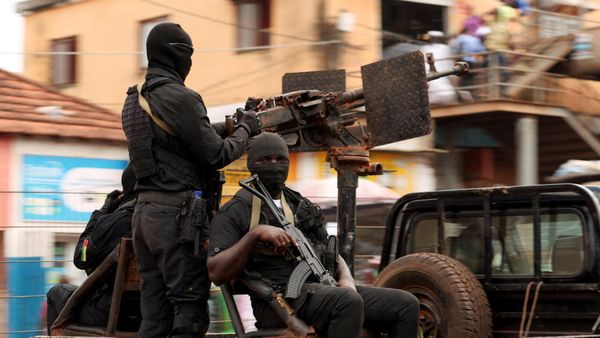
Dramatic images of the high-rise fire in Tai Po, Hong Kong have revealed the scale of devastation at Wang Fuk Court, where a fast-moving blaze tore through multiple residential blocks on Wednesday afternoon. Photos shared across social media and by international outlets show flames engulfing the exterior of the towers, while smoke poured through stairwells and residents attempted to flee.
As emergency teams battled the inferno, wider angles captured the full extent of the disaster including collapsing scaffolding, burning debris falling from upper floors, and firefighters navigating thick, wind-driven smoke. The images have prompted renewed scrutiny of fire safety enforcement in one of the world's densest housing environments.
Officials say dozens have died and hundreds remain unaccounted for, with the toll expected to rise. Families continue to gather in temporary shelters as search teams move systematically through the damaged blocks.
How The Blaze Unfolded
The fire reportedly broke out at about 2.50pm, spreading rapidly across exterior walls that were undergoing renovation. Bamboo scaffolding surrounding several towers ignited within minutes, according to footage reviewed by the South China Morning Post, allowing flames to climb vertically and breach multiple floors. Burning debris rained down on the estate as smoke drifted across the Tai Po district.
Photos taken by residents and first responders show fire bursting through windows while firefighters attempted to establish access routes. Several images depict residents descending narrow, smoke-filled stairwells with improvised face coverings, with others seen waiting at windows for rescue crews to reach them. Hong Kong authorities escalated the incident to a No. 5 alarm, mobilising more than 800 firefighters, over 120 appliances and numerous ambulance teams.
Human Impact
Officials confirmed that at least 44 people have died, including a firefighter, and more than 279 remain missing. Dozens were taken to hospital, many in critical condition with severe burns, respiratory complications and smoke-inhalation injuries, according to AP News. Emergency doctors said several survivors required aggressive fluid resuscitation and airway management due to prolonged exposure in confined spaces.
Images from community centres show evacuees arriving with small bags of belongings, queuing for registration, and waiting overnight for updates on missing family members. Local authorities estimate the estate housed nearly 4,800 residents across roughly 2,000 flats before the fire, leaving thousands facing displacement and long-term recovery needs.
Safety Concerns Over Scaffolding
Early investigative attention has focused on whether bamboo scaffolding and exterior insulation materials accelerated the fire's spread. Experts interviewed by Al Jazeera said bamboo is highly combustible in high-temperature conditions and may have contributed to rapid vertical flame movement. Preliminary assessments also suggest that leftover construction materials on the exterior façades could have intensified the blaze.
Police have arrested three people, including two company directors and a consulting engineer, on suspicion of manslaughter. Authorities are examining whether contractors complied with fire-prevention protocols, including mandatory removal of debris, proper compartmentation, and the safeguarding of escape routes during renovation.
Government and Public Response
Hong Kong's Chief Executive, John Lee, described the incident as a 'massive catastrophe' and pledged to accelerate reviews of renovation-site fire standards. President Xi Jinping offered condolences and urged authorities to prioritise rescue operations. Discussions have resumed over replacing bamboo scaffolding with metal alternatives, a proposal previously under consideration.
As search operations continue, the photos from Tai Po remain a stark record of one of Hong Kong's most serious residential fires. For survivors and families of the missing, attention is now shifting to accountability, recovery and the future safety of the city's high-rise communities.







